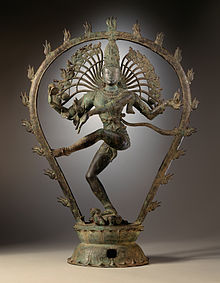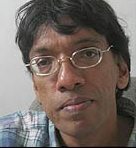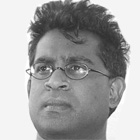–
I respond to the three opinion pieces of Samuel Ratnajeevan Herbert Hoole namely (i) “Arumuka Navalar: Fake Images and Histories” published in the Colombo Telegraph on March 30, 2013; (ii) “The Jaffna Version of the Tamil Bible: By Peter Percival or Arumuka Navalar” published in the Colombo Telegraph on April 5, 2013; and (iii) “Heritage Histories: What They Are and How They Operate Through Jaffna” published in the Colombo Telegraph on April 6, 2013.

Mr. Hoole asserts that Arumuka Navalar was built up by “ill-educated” “Tamil Saivite extremists” and that everything about Navalar was “fake” be it “his portrait, caste and name, and perhaps religion..”. He alleges that Navalar, a “high school dropout”, had ‘tiny ears and a big forehead on a huge head, thin hands and legs, strong facial hair, and huge body without any strength”. Hoole explains that Navalar was unable ‘to complete high school after 6 years in Tamil school and 13 years under Percival”. He adds that Navalar had a multitude of names each spelt differently and that he was but an “unpaid” “menial assistant” to the missionary Percival!
Hoole similarly claims that the Tamils “were Buddhist and Jain before Saivism took root after the seventh century AD”. He adds that 8,000 Jains who refused to convert to Saivite Hinduism were impaled in the 7th century. He asserts “that many Hindu temples today were once Buddhist and Jain”, agreeing with a Sinhala Buddhist nationalism that is eager to plant Buddha statues in places of old Hindu worship in Sri Lanka. He ends by asserting that “Christians live in fear – living oppressed and as the the oppressed’.
I will be brief as I respond. In the interests of brevity, I will focus on just two subjects i.e. (i) the roots of Tamil Hindu tradition prior to the period of Jain and Buddhist literary influence; and (ii) Arumuka Navalar. Hoole needs to verify his information. His is a highly selective and wishful narrative with numerous errors. Little of what Hoole says is credible. Its time to set the record straight in the interests of a more nuanced interpretation.
Hinduism, Jainism and Buddhism in early Tamil history
If one were to appraise the religious character of early Tamil society, one will need to refer to the earliest specimens of Tamil literature that exist today i.e. the Sangam-era work. The Sangam works consist of two literary compendia namely the Ettutogai or Eight Anthologies and the Pattu Paatu or 10 songs. Both are dated to between the 1st and 3rd centuries of the Common Era (CE). It is also important to cite the earliest Tamil grammar in existence today i.e the Tol-kaapiyam. The latter text is usually dated to the early centuries CE. There is an academic debate on the internal consistency and date of the Tol-kaapiyam.
The Sangam compendia I refer to excludes the 18 later works or the Pathinen-keezh-kannaku nool which subsumes the Silapadikaram, the Manimekalai, the Tirukural and other later texts. Those are post-Sangam works.
If one were to explore the Sangam-era, one finds a bardic tradition interspersed with references to the veneration of the Hindu gods Seyon or Murukan, Maayon or Vishnu, Venthan or Indra, Korravai or Durga and Varuna. These were the patron deities of the Tamil land. Seyon or Murukan was the benefactor of the hill tribes while Venthan or Indra was the God of Rain and the protector of the fertile agricultural tracts. Varuna, the God of the Sea, was the guardian of the maritime tracts and all those whose livelihood depended on the sea. Korravai or Durga was the patron of the fierce tribes of the arid tracts. Maayon or Vishnu, also known as the lotus-eyed or Taamarai Kannanaar, protected the herdsmen. The Sangam literature refers to the mighty womb of Korravai that gave birth to Seyyon. There are allusions to the three-eyed God, Siva.
There are references to the Brahmins who tended the sacred fire and studied the four Vedas or Naan Marai. Several Brahmins contributed to the corpus of early Sangam literature. This included Kapilar, Uruttira-kannanaar, Nakeerar, Paalai Kauthamanaar and Perum Kausikanaar to mention just a few. There were several others. Several of the Chera, Chola and Pandya monarchs performed the Vedic sacrifice as documented in the Sangam corpus. The practice of suttee existed. This inheritance is what we today call Tamil Hinduism. The literary allusions to the Jains and Buddhists were far fewer in the Sangam-era.
The pottery and stone inscriptions in Tamil Brahmi dated to the decades before the dawn of the common era offer insights as well. The potsherd inscriptions linked to a megalithic culture contain references to Murukan while the few early rock inscriptions document individual donations to itinerant Jain monks.
The more copious literary record that has survived to date reflects a Hindu folk idiom linked to the rural populace, chieftains and the priesthood while the rock inscriptions suggest individual traders sponsoring Jainism. Buddhism in that early era was numerically less significant. Hoole’s point that Hinduism influenced the Tamil land only in the 7th century is therefore false.
Buddhism emerged in a significant manner in the Tamil land with the later Kalabhras. The Kalabhra dynasty had invaded and ruled Tamil Nadu between the 4th and the 6th centuries CE. Inscriptional and literary evidence indicates that the Chola, Chera and Pandya kings were ruthlessly suppressed. The Kalabhras patronized Buddhism and used Prakrit. Buddhism remained an urban phenomenon. Most Tamil Buddhist monks of this period chose to write in Pali, not Tamil. This included Buddhadatta Thera from Uragapura (Uraiyur) and Dhammapala Thera from Tambarattha (Tirunelveli) who traveled to Sri Lanka to translate the proto-Sinhalese language commentaries into Pali. The celebrated Buddhist commentator Buddhaghosha lived for a while in Madhura-sutta-pattana (Madurai) en route to Sri Lanka to study the proto-Sinhalese texts. Hoole’s contention that Sinhalese literature is a 9th century phenomenon linked to the suppression of Buddhism in the Tamil land is therefore flawed!
The Buddhist zeal of the Kalabhras triggered a home-grown Saivite and Vaishnava revival in the 6th century. This in turn saw the eclipse of Pali scholarship in the Tamil land and a renewed pride in the Tamil language.
Buddhism however continued in urban Tamil Nadu until the 14th century. The Culavamsa describes Sinhalese kings inviting Tamil monks from South India to visit Sri Lanka between the 12th and 14th centuries CE. The Tamil grammar, the Vira-choliyam, was authored by a Buddhist in the heyday of Chola rule in the 10th century CE. The Saivite Hindu Cholas sponsored this Buddhist author. Meanwhile, the Jain center of Sittanavaasal continued to flourish between the 7th and 9th centuries. Saivite Hinduism did not annihilate Buddhism or of Jainism in 7th century Tamil Nadu as Hoole writes. The Buddhist presence in Tamil Nadu ended with the establishment of the Madurai Sultanate in the early 14th century. Tamil Jainism continues to exist to this day.
Hoole highlights the alleged impalement of 8,000 Jains in 7th century Tamil Nadu and cites Nambi Aandaar Nambi, an early medieval Saivite scholar, in support of his claim. This was a literary allusion with no independent evidence. The Chalukyas and Rashtrakutas ruled in neighboring Karnataka. Several of the near contemporary Chalukya and Rashtrakuta monarchs, not to mention the Pallava kings in Tamil Nadu were Jain. There is no corroborating Jain literary or inscriptional evidence of any such impalement. The inquisition was a Christian instrument of persecution, not Hindu.
Hoole is likewise dishonest in selectively quoting Nilakanta Sasti’s History of South India to extrapolate that Buddhist and Jain temples were converted into Hindu places of worship ignoring the extensive evidence provided by Professor Sastri on the Brahmanic and Vaishnava presence in the earliest period of Tamil history.
In conclusion, what we now designate as Hinduism was pre-eminent in the earliest years of recorded Tamil history. The Jains did extensively contribute to Tamil literature at a subsequent date. To argue that we were Jains and Buddhists before we became Hindu is simply incorrect.
Arumuka Navalar
Let me now turn to the subject of Arumuka Navalar. Whether Navalar had any input in the translation of the Bible into Tamil, how he looked, how he spelt his Tamil name in English in a era where such spelling had not been standardized and where births and marriages were unregistered, what caste he belonged to and whether his father was baptized is irrelevant to his legacy as a pioneer who recognized the importance of the media, print technology and western education to the dissemination of Tamil Hindu learning.
Mr. Hoole has had a 15 to 20 year track record of attacking Hinduism and individuals linked to the Hindu revival in Sri Lanka. I had rebutted an earlier article of his dated May 14, 2010 where he had attacked Arumuka Navalar and Sir Ponnambalam Ramanathan. “In Defense of the Sri Lankan Hindu of Yesteryear: Arumuka Navalar and Sir Ponnambalam Ramanathan” was published in the Sri Lanka Guardian on May 20, 2010 and in the HaindavaKeralam and LankaWeb. What I stated there still holds. Let me repeat what I said there rather than reinvent the wheel.
One needs to revert to primary sources if one is to accurately describe Arumuka Navalar. Navalar lived between 1822 and 1877 CE. His works include the ‘Prabandha Thirattu’, ‘Saiva Thooshana Parihaaram’, ‘the Prohibition of Killing’, and his classic deconstruction of the Bible. These texts help one to understand him better.
One discovers herein an astonishing man who grasped the imperative to establish Hindu primary and secondary schools in the 19th century, modernize and broadbase Hindu education, use simple Tamil prose to disseminate Saivite Hindu doctrine and leverage the printing press to republish the Tamil classics and Saivite Hindu scripture. Navalar made it a point to study Christianity to more effectively combat the white missionary enterprise. Navalar worked in Jaffna and Tamil Nadu. He established schools in Jaffna and in South India of which the Saiva Prakasa Vidyalayam was the first. Arumuka Navalar’s emphasis on a modern Hindu education in Sri Lanka was the prelude to the later Hindu Board of Education in Sri Lanka.
He was the first person to avail of the modern printing press to publish rare Tamil classics in the mid-1800s anticipating the subsequent seminal work of U.V. Swaminatha Iyer and the other Sri Lankan Tamil Hindu stalwart C.W. Thamotherampillai.Navalar established a printing press in Sri Lanka and in Tamil Nadu. The one in Jaffna was called the Vidyanubalana Yantra Sala. Professor Dennis Hudson of the State University of New York has chronicled Navalar’s use of the printing press on both sides of the Palk Straits in the 19th century. Navalar published 97 Tamil language documents. He published rare works of Tamil grammar, literature, liturgy and religion that were previously unavailable in print. For instance, the first ever Sangam text that saw the light of print was the Tiru-murukaatru-padai of the Pattu Paatu. Navalar brought this out in 1851.
Noted Czech scholar of Tamil, Kamil Zvelebil, demonstrated that Navalar was the first author to use modern Tamil prose in a manner understandable to the layperson. Professor Meenakshisundaram echoed this view when he reiterated that Navalar was the first to use simplified and unadorned lay Tamil. He had adopted a highly effective and unadorned preaching style borrowed from the missionaries that consisted of five steps to quote Hoole i.e. (i) preface; (ii) exposition; (iii) doctrinal analysis; (iv) applying the interpretation; and (v) conclusion. So yes, Navalar made stellar contributions to Hinduism, the Tamil language, Tamil prose and Sri Lankan Tamil identity.
The Hindu revival preceded the Buddhist revival in Sri Lanka by a full generation. As Bishop Kulendran of the Church of South India in Jaffna conceded, it was Navalar’s Saivite Hindu revival that stemmed the conversions to Christianity in northern Sri Lanka in the 19th century. It was Navalar likewise who first articulated in modern times that the Sri Lankan Tamil identity was parallel to and not the same as the South Indian Tamil identity.
Navalar, like almost all in the mid-1800s, suffered from caste prejudice. The 1800s was an unenlightened age where the Christian missionaries in India and Ceylon exemplified a deep religious bigotry, the Sri Lankan Tamils exemplified a hateful caste prejudice while the Europeans were busy enslaving or exterminating the Black population in America, Australia and South Africa often in the name of Christianity. Navalar can not be absolved on the issue of caste. This said, a critical interpretation of history forces one to acknowledge his other accomplishments.
Bibliography
(i) K.A. Nilakanta Sastri, A History of South India: From Prehistoric Times to the Fall of Vijayanagar, Oxford University Press, 1955;
(ii) V.R. Ramachandra Dikshitar, Studies in Tamil Language and History, University of Madras, 1936;
(iii) Vaiyapuri Pillai, History of Tamil Language and Literature, Chennai, 1956;
(iv) George Hart, The poems of ancient Tamil, their milieu and their Sanskrit counterparts, 1975 (University of California, Berkeley);
(v) Takanobu Takahashi, Tamil love poetry and poetics, 1995;
(vi) Kamil Zvelebil, The Smile of Murukan on Tamil literature of South India, 1973; and
(vi) V.S. Rajam, A comparative study of two ancient Indian grammatical traditions: The Tolkapiyam compared with Sanskrit Rk-pratisakhya, Taittriya-pratisakhya, Apisal siksa, and the Astadhyayi, University of Pennsylvania, 1981.










